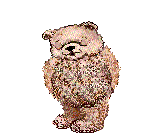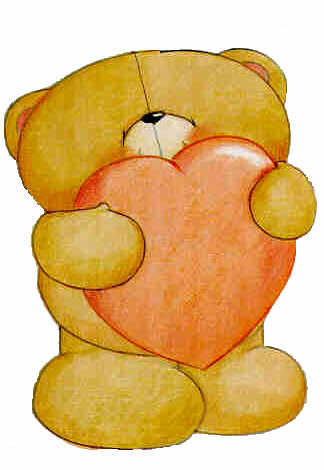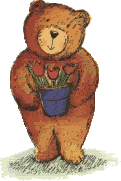

So what is the appeal of teddy bears-beyond the cute cuddle answers? Junginger says Richard Steiff never wrote down what inspired him to design teddy bears.
"Why did Richard choose the bear? Well, it is absolutely the strongest European animal and there is something reassuring in having a strong friend. Also there is something mystical about the animal...and its habits are very human-like-it can walk on two legs, for example. Richard Steiff recognized these 'human' qualities and used them to create a new toy-a bear with a human body. The toy was not a copy of a human, like a doll, nor was it an exact copy of an animal-it fell somewhere in between. I think the appeal of teddy bears lies in this fact. They are familiar and comforting, yet also different."
Bears appear as mystical creatures in the fairy tales of almost every European country. Stories include Snow White and Rose Red by the Brothers Grimm, The White Bear from Sweden, and The Princess and the Bear from Austria. Of course, the most famous fairy tale concerning bears is Goldilocks and the Three Bears. Those who plumb such tales for deeper, darker meanings, say it deals symbolically with the struggle with Oedipal predicaments, the search for identity, and sibling rivalry.
Elsewhere it has been suggested that the anthropomorphic nature of teddies meets the need for a silent, loyal companion. They provide reassurance as a confidant who can be trusted with one's intimate thoughts and even occasionally abused without retaliation.
In reality, while much has been written about the appeal of teddies, including by the psychologist Carl Gustav Jung, no one has ever fully "explained" their appeal and it is likely to remain a mystery.

Of course, teddy bears are not only fascinating to children. Many adults also find teddies irresistible. Leyla Maniera, teddy bear specialist at Christie's auction house in London, says, "What appeals to adults is the nostalgia value. Nearly everyone had a bear as a child and having a bear as an adult allows them to hold onto, or recall, part of their childhood. In an age of endless bad news of wars, poverty and death, it is comforting to have a symbol of the security and love you knew as a child and I suspect everyone has a bear, even if that bear is locked away in their hearts or memories." It is, perhaps, this "comfort" aspect which has fueled the recent explosion in teddy bear prices. Even as late as ten years ago, second-hand teddies could be bought for a few dimes at a flea market. Soon, however, bears began to be seen as collectibles and were included in toy auctions by companies such as Sotheby's and Christie's.
Today the teddy bear market is far from child's play. Christie's now has a yearly auction devoted entirely to teddies and collectors spend huge sums not just on rare and "artistic" teddies, but also on their clothes and other paraphernalia as well.
In 1989, Alfonzo, a red Steiff bear, sold for a then record of DM 38,700. The bear, made between 1906 and 1911, was the only toy that Princess Xenia, sister of Czar Nikolaus II, took with her when she fled to England at the outbreak of the Russian Revolution. Then in 1993, Eliott, a rare, blue-colored trial model bear made by Steiff around 1908, sold for DM 169,000. But the final transition of teddy bears from collectibles to valuable antiques occurred last year on December 5 when a small, cinnamon-colored Steiff bear called Teddy Girl sold for £110,000 at a Christie's teddy bear auction-more than double the previous record.
While the result sent people around the world scurrying into attics to dust off their old battered Poohs and Ruperts, Maniera cautions that such prices are unlikely to occur regularly: "What has to be understood is that Teddy Girl was a very famous bear and her history is well documented. That is the reason for the high price. She has appeared in almost every book written on bears."
The key word in the astronomical figures paid for Alfonzo, Eliott and Teddy Girl, is "Steiff." According to Maniera, Steiff is almost solely responsible for the boom in the market. "If prices were set for the top 10 most valuable teddy bears in the world, all of them would be Steiff bears. Steiff continues to set the standards others have to match. Their workmanship and quality is outstanding. Many of these bears were made 70 and 80 years ago and are now turning up for auction still in good condition."
Today, the Margarete Steiff GmbH is still owned by the Steiff family, although the family has diversified its interests into such areas as machinery and rubber products. But, with an annual turnover of almost DM 100 million, the toy firm still remains the company flagship.
A Steiff plush toy-with its famous "Knopf im Ohr" trademark (a little metal stud in one ear)-is still an object of quality and something of a childhood status symbol, but they don't come cheap. Price tags start at well over DM 100 for even a small bear and range to DM 25,000 for a full-sized elephant, but the price is not a deterrent-the 1.5 million plush toys Steiff makes annually (approximately 300,000 of them bears) are still eagerly sought after.
One reason for the high price is that the toys are still hand-made in Germany in small runs using the finest materials. The pattern is printed on the backside of the plush, cut out by hand and then sewn together. Sometimes this is done with heavy machines but often, when the co
mpany is producing limited edition old-fashioned bears, this is also carried out by hand. The bears are then stuffed with wood shavings, acrylic or polyester fillings.

But if the quality and collectability of Steiff bears seem to ensure their future and the continued success of the Steiff company itself, what of teddies as a breed? Will they continue to have wide appeal and work their particular magic in the modern age of computers and cheap, mass-marketed products? Lyla Maniera believes there are no grounds for pessimism.
"I recently returned from Japan where teddies are now being marketed more heavily and it is surprising how eagerly the children adopted them. The culture there is much more technology-oriented but the children seemed to need an escape from that and teddy bears seem to provide it. That was reassuring to see," she says. "I believe there will always remain a place in the human heart for teddy bears."




BIGGEST Teddy Bear Directory